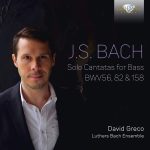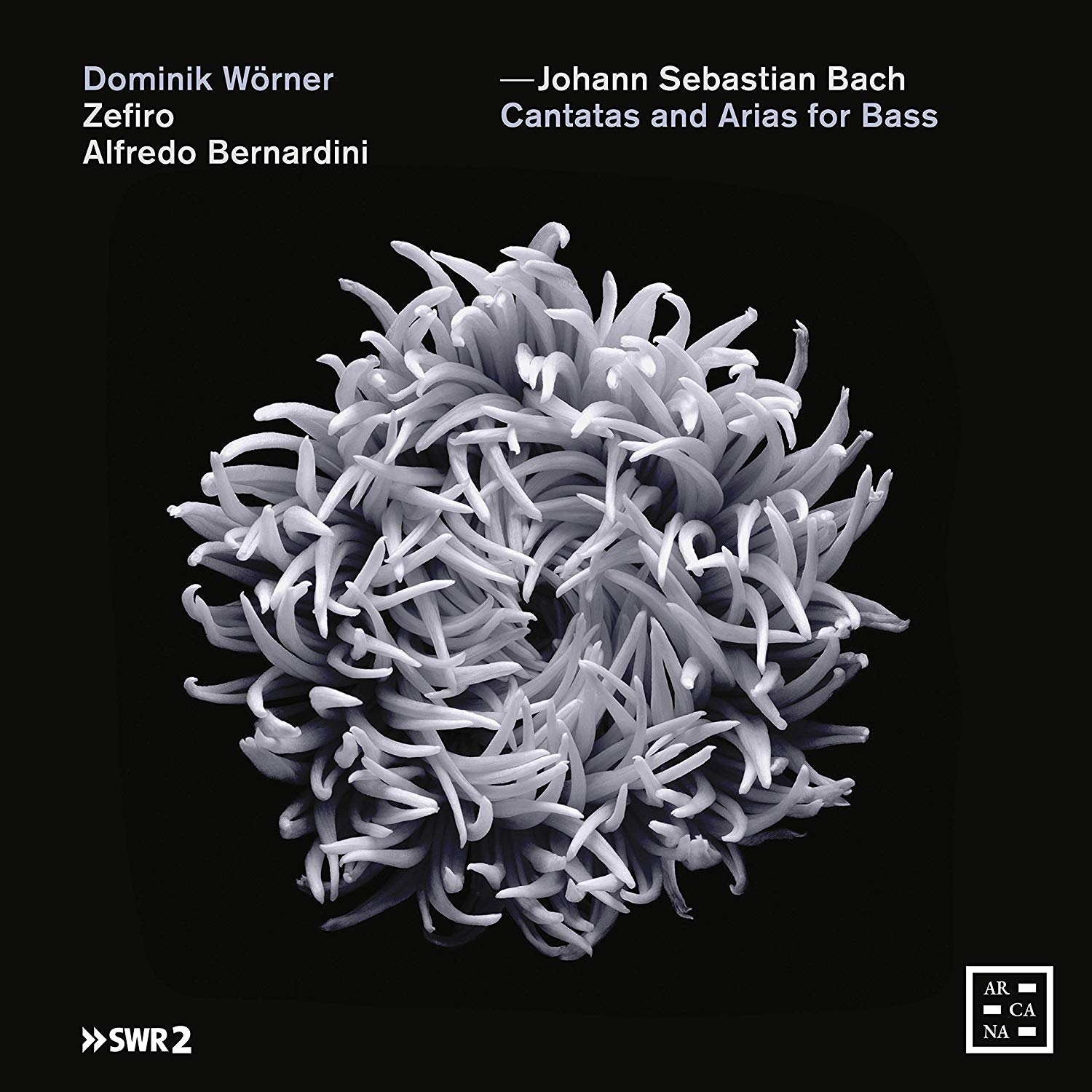Bach: Cantatas and Arias for Bass
Dominik Wörner, Zefiro, Alfredo Bernardini
62:17
Arcana A466
BWV56, 82, 158 + arias from BWV20, 26, 101

J. S. Bach: Solo Cantatas for Bass BWV56, 82 & 158
David Greco, Luthers Bach Ensemble
49:36
Brilliant Classics 95942
Click HERE to buy this CD on amazon.
It is entirely fortuitous that these two CDs with almost identical contents should arrive together for review. Dominic Wörner is a well-known name on German labels, and sings three cantatas here – BWV 82, 158 and 56 – together with the bass arias from BWV 22, 26 and 101. The model booklet has an essay by Peter Wollny and the texts in German, English and French. At the front are precise details of the tracks with who plays what in which cantata and on which instrument, and full details of the makers and dates are given. Zefiro uses single strings, a harpsichord in addition to the organ and Bernardini provides direction.
David Greco, an Australian who has sung with the Westminster Abbey choir and the Sistine Chapel choir, sings with an ensemble of (largely) ex fellow-students of the Royal Conservatory in the Hague, many of whom play in Groningen’s Lutheran Church. The director of the ensemble and organist Tyman Bronda was instrumental in this church getting the organ-builder Bernhardt Edskes to remake the lost organ originally built by Arp Schnitger in 1699-1717 for the church in which he worshipped when in Groningen. There is an interesting website on this organ, which makes sense of Schnitger’s various additions and restructurings made over a period of 18 years. It is tuned to A=415Hz and stands in a broad west gallery, with an additional detached console so that the director can play the recits and arias at least. Photographs on the website indicate that this console is a single manual with only 8’, 4’ & 2’ and the only thing I found disappointing in this recording was that I did not hear more substantial organ sound, even in the concluding chorales. No details are given of the other instruments, but a theorbo or archlute forms an audible part of the basso continuo.
The programmes on both CDs are identical save that Wörner’s disc includes the bass arias from BWV 20, 26 and 101, bringing the timing up to 62’17 as opposed to Greco who sings only the three complete cantatas and so is well under the hour. So, at first sight, the bonus of hearing Bernardini play the sparkling obbligato in BWV 20v and the three oboes (or two plus taille in 101iv) in 26iv makes the choice obvious.
However, several things make me want to recommend the CD by Greco and Bronda. First – and most fundamental – is the singing. While Wörner is well-practised in this repertoire, Greco’s clarity of diction and elegant, vibrato-less baritone tone win for me over Wörner’s more substantial bass sound. Second, the instrumental playing. I admire Berardini’s playing and direction and Zefiro’s wind band is splendid, but listen to the beautifully balanced violone in the last movement of BWV 82 from the Groningen Luthers band, who also use single strings; and the obbligato violin in BWV 158ii played by Joanna Huszcza is stunningly beautiful and a model of how to partner a voice in Bach’s cantata writing, as is the oboe playing of Amy Power in BWV 56iii.
What a lot we have to learn about how to perform Bach cantatas, and while there is no one ‘right way’, you can gain immense insight from listening to two versions side by side. Why, I wonder, did the Groningen group not give us the soprano chorale in BWV 158ii with the Sesquialtera on the organ rather than with four soprano voices and a doubling oboe which plays no further part in this puzzling cantata, if they judged the line to be in need of a boost? Perhaps they tried it – but it would have displayed the virtues of playing cantatas around a more substantial organ.
David Stancliffe
